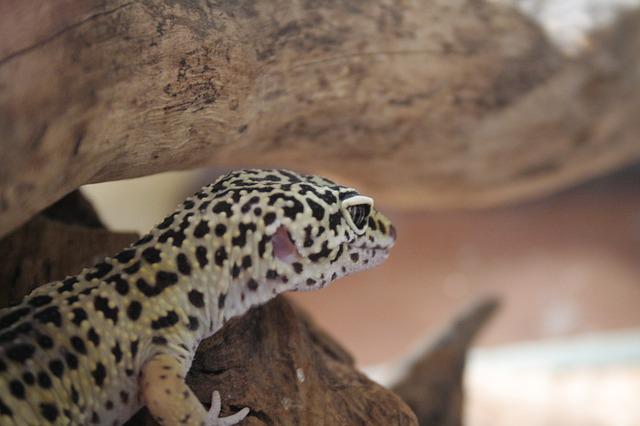If you’ve just brought a new leopard gecko home, the first question on your mind is probably “when can I hold it?” It’s natural to want to bond with your new pet as soon as possible, but you should wait until it has had time to adjust to its new environment. In this blog post, we will discuss when is the best time to hold your leopard gecko and how to make sure that both of you have a positive experience.
When Can I Hold My New Leopard Gecko?
You’ll need to wait until your leopard gecko is at least 8 weeks old before you can hold it.
By this age, it should be well-adjusted to its new environment and be large enough to defend itself if necessary.
When handling your leopard gecko for the first time, be sure to wash your hands thoroughly to remove any oils or chemicals that could be harmful to the reptile. Gently cup your hands around the gecko’s body and support its tail with your fingers.
If you notice the tail beginning to drop, that’s a sign that your leopard gecko is feeling stressed and you’ll need to put it back in its enclosure.
With a little patience and care, you’ll be able to build a strong bond with your new leopard gecko friend.
Why it is important to wait before holding your new leopard gecko
When you first get your leopard gecko, it is important to wait at least 24 hours before handling them.
This allows them to acclimate to their new surroundings and reduces the stress of being handled.
It is also important to wash your hands before handling your leopard gecko, as they are susceptible to diseases from humans.
When you do handle your leopard gecko, be sure to support their entire body, as they are fragile and can easily be injured.
Never try to pick them up by the tail, as this can cause their tail to fall off. With a little patience and care, you will be able to build a bond with your new leopard gecko that will last a lifetime.
How to pick up and safely hold a new Leopard Gecko
When you first bring home your new leopard gecko, it is important to handle them correctly so that they feel comfortable and safe.
To pick them up, gently cup your hand underneath their belly and support their weight with your other hand.
Avoid grabbing them by the tail as this can cause shedding problems. Once they are in your hand, hold them close to your body so that they feel secure.
You can also place them on a soft surface like a towel if you need to take a break from holding them.
When handling your leopard gecko, always be aware of their claws and teeth so that you do not get scratched or bitten.
With a little patience and practice, you will be able to safely hold and interact with your new pet.
How often should I handle my Leopard Gecko?
When it comes to handling, leopard geckos are generally very tolerant of being held and handled, and can easily become used to being held on a regular basis.
However, it is important not to handle them too often, as this can cause stress and may lead to health problems.
As a general rule of thumb, leopard geckos should be handled a maximum of two to three times per week.
This will give them plenty of time to adjust to their new surroundings and bond with their owner, without becoming overwhelmed.
Signs that a Leopard Gecko is unhappy being handled
Leopard geckos are shy, skittish lizards that are not naturally inclined to be handled by humans.
However, with time, patience, and proper handling techniques, many leopard geckos can become acclimated to being handled on a regular basis.
There are a few signs that indicate a leopard gecko is unhappy being handled, and if you notice any of these signs it is best to put the lizard down and give it some time to calm down.
The first sign is if the leopard gecko tries to bite. While leopard gecko bites are not poisonous or particularly harmful, they can be quite painful.
Another sign is if the leopard gecko drops its tail. Leopard geckos can drop their tails as a defense mechanism when they feel threatened, and this is often an indicator that the lizard is feeling stressed or frightened.
If you see either of these signs, it is best to put the leopard gecko down and give it some time to calm down before trying to handle it again.
Will my Leopard Gecko try to get away when being handled
The best way to prevent your leopard gecko from getting away is to handle it regularly. This will help your leopard gecko get used to being handled and will make it less likely to try to escape when it feels unsafe.
Handling your leopard gecko also provides an opportunity for you to bond with your pet. When done properly, handling can be a great experience for both you and your leopard gecko.
Conclusion
As with all animals, it is important to handle your new leopard gecko with care. In general, it is best to wait at least a week before handling your new pet. This gives the gecko time to adjust to its new environment and get used to you.
When you do eventually pick up your leopard gecko, be sure to support its entire body. Avoid holding it by the tail, as this can cause the tail to break off. Instead, cup your hands around the gecko’s body and allow it to walk onto your hand. With time and patience, you will be able to build a bond with your new leopard gecko and enjoy many happy years together.




